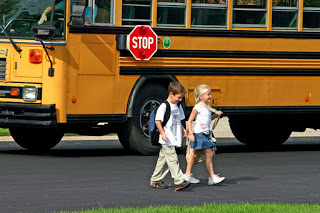Monthly Archives: November 2009

Motor Vehicle Crashes More Frequent For Teens with Own Cars
November 23, 2009
The journal Pediatrics recently published a study that showed that teens who report having their own vehicles (vehicles they don’t share with other family members) are more than twice as likely to have been involved in a recent motor vehicle crash. The study, a survey of 2,167 teens by researchers at Children’s Hospital of Philadelphia, indicated that teens who have their own vehicles are also much more likely to participate in other risky driving behaviors, such as using a cell phone and speeding.
Why might this be? According to driver safety experts, the following aspects of teens having vehicles for their sole use are potential contributors to the higher motor vehicle collision rate:
- The teen is more likely to have selected their own vehicle: Meaning a small, sporty car; high-powered, easily maneuverable vehicles tempt teens to drive faster and take more chances behind the wheel, such as weaving in and out of traffic.
- More driving time: When teens share a vehicle with other family members, they simply aren’t on the road as much. Teens who must return the vehicle by a certain hour so another family member can use it have a natural curfew that limits time on the road. While more driving time might make a teen driver more comfortable behind the wheel, she or he is not necessarily more skilled at driving. A false sense of confidence can lead teen drivers to take risks on the road.
- Extra freedom: When teens don’t have to request the keys, they quickly fall into the habit of driving whenever and wherever they want, and parents just as quickly get used to the freedom of not having to give rides to boisterous teens and their friends. This means that teens take more frequent trips, in addition to staying out longer.
- More passengers: Teens who don’t have to share their vehicles with their parents gain status amongst their friends because they can offer transportation to those who don’t have access to family vehicles. More time in the vehicle with teen passengers means trouble – teen passengers make driving much more risky for teen drivers.
Statistically, it’s safer for your teen to share a family vehicle rather than having one of their own. For parents who still intend to buy their teens their own vehicles, traffic safety professionals offer the following guidelines:
- Choose the vehicle carefully; research your options thoroughly. Teen drivers need stable, midsize vehicles with all the safety features you can afford. Frankly, if your teen is happy with your selection, it’s a sign that you may need to reevaluate your options and choose a different vehicle.
- Make sure your teen adheres to the Graduated Driver Licensing (GDL) laws in your state. If your state doesn’t impose time limitations for teen drivers, create your own as part of your house rules. Match the number of hours your teen is allowed to drive to the level of responsibility and maturity she or he exhibits.
- Don’t allow your teen to equate having her or his own vehicle to having unrestricted driving time. Set limits on the frequency and purpose for driving trips. Accompany your teen on trips in their vehicle occasionally and observe their driving behavior carefully, watching for any bad driving habits they may have picked up while driving alone.
- Use GDL laws and the number of safety belts in your car to determine the maximum number of passengers your teen is allowed to have in the vehicle.
Check frequently to make sure your teen is complying with your restrictions. Review your cell phone bill to ensure that your teen is not making calls when she or he is typically behind the wheel. Any deviation from the rules should result in restricted (or removed) driving privileges for a specified period of time. If teens aren’t following the ground rules for use of the vehicle, parents need to penalize them by taking the keys away and acting as chauffeurs for a time.

Teens and Nighttime Single Vehicle Crashes
November 16, 2009
As you read the daily news, a familiar pattern begins to occur. You begin to notice the car crashes that happen at night with only one vehicle involved. Many times, these crashes involve teen drivers.
Is it your imagination? No.
Many typical characteristics of teen crashes are:
- Teens are more likely than any other age group to be involved in a single vehicle crash. Among passenger vehicle drivers’ ages 16-19 involved in fatal crashes in 2008, 49 percent were involved in single-vehicle crashes. (Insurance Institute for Highway Safety)
- Nighttime fatal crash rates for 16 year olds are nearly twice as high as daytime rates. Centers for Disease Control and Prevention (CDC)
- In 2008, 37 percent of the 15- to 20-year-old male drivers who were involved in fatal crashes were speeding at the time of the crash.
Nighttime driving not only diminishes a driver’s visibility, but also their distance and speed perception, making it harder to judge a situation and respond quickly. Speeding decreases the time and space available to react and increases the severity of any injuries. Many times teenagers react too quickly and overcorrect or lose control of the vehicle, resulting in a single-vehicle crash. Drowsy driving is also more prevalent at night, and teens are especially vulnerable to fatigue and need additional sleep during this developmental time. In addition, other drivers on the road are more likely to be less attentive, drowsy or under the influence at night.
What can be done?
Create and enforce stricter Graduated Drivers Licensing (GDL) laws that give teens the privilege of driving but limit their exposure to higher risk situations encountered, by restricting nighttime driving, teen passengers and cell phone use. Experience behind the wheel is best gained in the daytime when accompanied by an experienced adult driver and under ideal driving conditions. GDL has proved successful in reducing crashes and fatalities among teen drivers as they progress to unrestricted driving at age 18.
Teens are ready to drive and need to be given the tools to drive safely. Understand the risk factors that young teen drivers face and place limits on driving privileges until they acquire the valuable experience needed to develop those tools safely.

Mandatory Florida Traffic School for Passing a School Bus
November 3, 2009
Effective October 2009, the State of Florida has taken steps to improve the safety of children riding on school buses. A new law has gone into effect which will require motorists to attend a basic driver improvement course or a Florida Traffic School course should they fail to stop for a school bus loading or unloading children. This action comes in conjunction with the observance of National School Bus Safety Week which is designed to raise awareness of the dangers children face from other motorists on the road. This year’s theme is “Avoid Harm, Obey the Stop Arm”. It reminds drivers to stop when the school bus deploys the red flashing lights and stop arm.
Florida’s public schools transport over one million students a day on school buses. School buses are recognized as one of the safest ways to travel to and from school. Even so, the National Highway Transportation Safety Administration reports an average of 20 school age children are killed in transportation related accidents each year, with the majority of deaths occurring during loading and unloading. The afternoon hours between 3 and 4 p.m. accounted for 32 percent of the fatalities.
The results of a study conducted by the Center for Urban Transportation Research identified the need for increased driver education and tougher enforcement in Florida. With this new law, the penalties of passing a stopped school bus loading and unloading children will increase. The cost of the fine has gone up by $65 and motorists are now required to attend a four hour Basic Driver Improvement Course. The course serves as a refresher on defensive driving techniques and an explanation of new laws. It must be completed within 90 days of receipt of the notice from the Florida Department of Highway Safety and Motor Vehicles. Failure to complete the driver improvement course within the time limit will result in the suspension of the driver’s license.
From the 2009 Florida Driver Handbook: https://www.lowestpricetrafficschool.com/handbooks/driver/en/3/7
School Buses
On a two way street or highway, all drivers moving in either direction must stop for a stopped school bus which is picking up or dropping off children. You must always stop if you are moving in the same direction as the bus and you must remain stopped until the bus stop arm is withdrawn.
If the highway is divided by a raised barrier or an unpaved median at least five feet wide, you do not have to stop if you are moving in the opposite direction of the bus. Painted lines or pavement markings are not considered barriers.
You must always stop if you are moving in the same direction as the bus and you must continue until the bus stop arm is withdrawn.
When school is in session, drivers need to be extra alert. Children are always unpredictable and you can not take anything for granted. Slow down, look left, look right and left again. Then proceed slowly with caution.
Be on the lookout for children as you travel and expect the unexpected. Remember to “Avoid Harm, Obey the Arm”.
